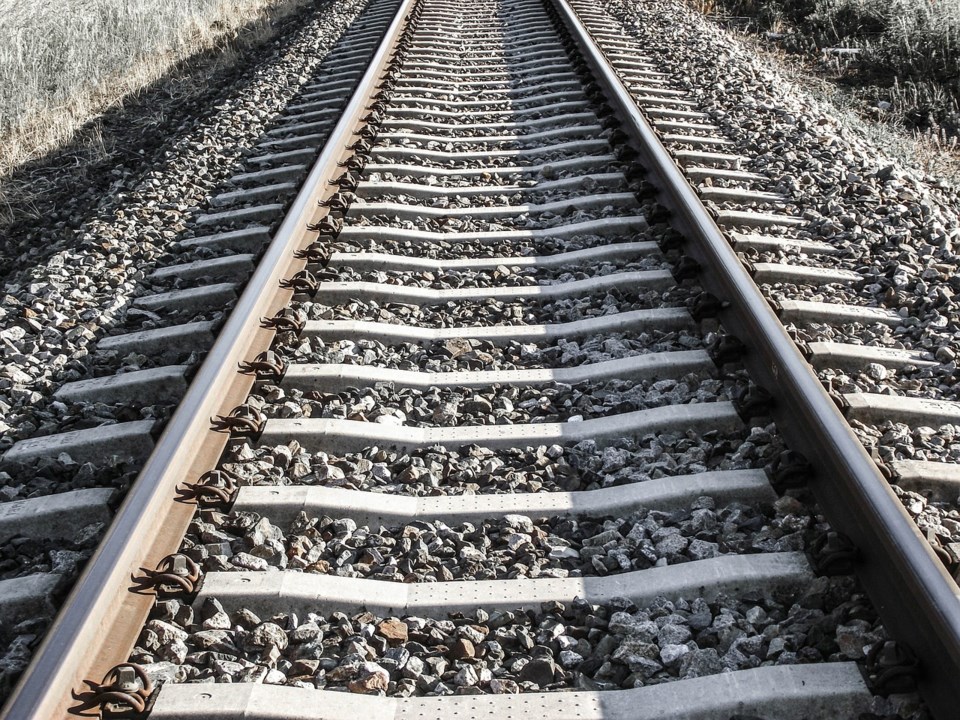It’s not a new topic, but it’s one that still brings up a lot of questions for people. In towns and cities such as this one where train tracks run through the middle of it, a common concern is what happens if there’s a train on the tracks during an emergency?
To answer it simply, emergency services have a special policy with Canadian National Railway (CN). Should an emergency vehicle need to get across the tracks, there is a direct channel they can use to contact the train so as to request the train either open up a crossing or split the train.
“For someone who’s not in an emergency vehicle, you’re at the mercy of the train, but we can call them directly,” said Mike Kwasnica, fire chief for the Humboldt Fire Department. “Your best bet is to call 911. They can call EMS (Emergency Medical Service) or us.”
Here’s where it gets tricky. Depending on the situation, the nature of the emergency response for the ambulance service can vary. If a call is life threatening, a crew might choose to have a train broken. If it isn’t, they can decide if the call warrants a train separation. Sometimes waiting for a train crossing to become open might only mean the difference of ten minutes as opposed to two, which wouldn’t affect the outcome of a non-life threatening situation.
“If an alternate crossing cannot be accessed, CN either clears the tracks, or breaks the train for us,” said a Facebook post by the Humboldt & District Ambulance group. “Even with our high call volumes we are fortunate in many instances, and only need to implement this policy three to four times per year. CN is excellent about accommodating EMS, and we have never had a significant delay due to a train.”
This policy answers a recent concern that came up when an individual was injured and the ambulance was called. According to witness reports, the patient had to wait approximately 15 to 20 minutes for the train to pass in order for the ambulance to cross. While some were concerned that it could have been worse had the situation been more serious, it seems plausible that the EMS were already aware the situation was non-life threatening and chose not to have the train stop and split.
“When an emergency call comes through, it’s prioritized based on symptoms. The ambulance response is based on that information coming in,” said Derek Dagenais of the Humboldt EMS. “Because the information from the caller can be confusing or isn’t directly next to the patient, it always gets prioritized on a worst case scenario. A lot of times we get there and the patient isn’t as urgent.”
Even if a train is on the crossing and the EMTs have to get through, Dagenais says that paramedics are trained to work on the fly. Whatever the situation, they’ll find a way to work around it.
So far, the current policies have never been a problem for them, nor have they been a problem for the local fire department.
“We’ve never had an issue where it’s affected a patient condition or outcome,” said Dagenais. “It will slightly delay response of course because it takes time to move the train, but they’re very receptive and very quick when they do this for us.”
According to Kwasnica, it’s pretty much the same story, although he said there’s no guarantee it won’t ever cause an issue. It may be something they’ll have to deal with in the future, but for now the status quo seems to be working.
Between both Dagenais and Kwasnica, they said that CN has been very willing to either move the train faster so as to open up a crossing or split the train if requested. Dagenais said that the train conductor has sometimes even left the crossing clear for 20 minutes or so if he knows the paramedics are going to have to come back across.
“The way it’s set up, it works for us,” said Dagenais.
CN could not be reached for comment.




